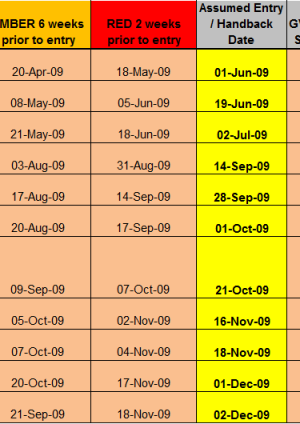
Physically Managing Possession of Land and Property
Document
type: Micro-report
Author:
Paul Bolton BSc BSc (Hons) MRICS MCIOB MBIFM
Publication
Date: 19/09/2017
-
Abstract
This paper identifies the implications and practical solutions on how best to take possession of land and property using Parliamentary powers and successfully manage that land during the course of a major project.
It identifies who needs to be involved in the lead up to and delivery of possession, highlights what to avoid in the process of taking property and how strong management is imperative to maintain consistency over a wide programme, covering multiple sites and stakeholders.
It also shows that a consistent yet simple structure helps avoid ambiguity and confusion.
This paper will be of interest to major projects exercising the responsibilities of an acquiring authority.
-
Read the full document
Introduction and Industry Context
The Crossrail Act received Royal Assent in 2008 providing legal powers to progress with the acquisition of land and property via compulsory purchase over an area in excess of 5 million square metres along a route spanning 85 miles over a five-year period.
During land acquisition it is important to plan possessions to align with the construction programme to ensure competent custodians are identified at all times to take on site care, custody and control to mitigate liability. Aligning possession with a project start date also minimises the time for which the land must be held before work starts and hence the amount of compensation.
Story
Crossrail’s Estates team have successfully managed over 1000 complex work area possessions. To do this it is essential to have procedures in place which are endorsed at relevant directorate level and which all contractors, project teams and other interested stakeholders must observe. The procedures must align with the approved legislative powers to empower possession. The process should be given senior level ownership to prevent dilution or change to suit other departments or project specific requirements If this is not done then sites might each develop their own way of exchanging land and collation and accountability would be impossible to control or audit. Procedures must be regularly reviewed and updated to meet changing circumstances through a recognised QA approval process. At Crossrail the procedure was called the Estates Management Plan.
Key Teams
To successfully take land and property there must be competent teams of professionals who are familiar and aligned with the procedure. Failure to adequately resource will greatly impact possession, delay the project and in turn create major cost implications.
Professionals were engaged in the following specialisms to achieve successful possession for Crossrail:
1) Compensation – Case Surveyors and Business Relocation Managers, engaged through competitively procuring this service, to work closely with the affected owners and occupiers of land which is impacted or required and their agents and lawyers. Transport for London were successful in the bid for providing the professional support services necessary to help in the acquisition and compensation service for Crossrail. In addition in-house staff were engaged in the preparation of notices and managing the complex process of serving them.
Case and business relocation managers act as valuation surveyors and mediators to manage and validate compensation payments and the transfer of funds for acquisition in a timely manner to ensure access is not impeded on the day of entry. They handle any on-going claims or settlement payments after the event, taking matters to the Lands Tribunal where there is a dispute.
2) Acquisitions – At least 12 months in advance of possession, in order to have all appropriate possession measures aligned and compliant, acquisition staff interface closely with senior delegated construction directors responsible for delivery to sign off approval for each area of land. They work with the respective compensation case surveyor/business relocation managers and programme planners to agree the legal terms of occupancy, the exact area required within the Act boundaries, the budget and date of entry. They administer the formal process of serving notices on an affected party to acquire the land within strict statutory deadlines. The Notice served clearly denotes the land in question, the occupiers’ compensation rights, what statutory right is being applied to enforce possession and the date of entry.
3) Estates – In conjunction with the acquisition notices served in 2 above, Estates mobilise and manage the possession process to ensure land and property identified for the project is successfully taken on the date specified. Estates organise the relevant case and business relocation managers (in 1 and 2 above), site specific project manager, security manager, community relations and health and safety officer to attend a series of meetings in the lead up to taking possession. This is assisted by a RAG system where meetings are held 10 weeks before entry (Green) and 6 weeks before entry (Red) to finalise issues of entry. The frequency of meetings will be dependent on the size, nature, complexity and who is available to take it. Any potential delays or problems highlighted may require further action or specialist advice including the use of a high court enforcement notice to instruct bailiff action as a last resort.
Over the duration of the project Estates ensure that a “Responsible Party” is always accountable for the ‘3Cs’:
- Care
- Custody
- Control
Where there is no principal contractor available to take on the 3Cs for an area of land then Estates temporarily take on this role.
Estates Management Plan
The Estates Management Plan is essential for setting out a clear structure to organise and manage entry onto land and property. It combines the rights of possession and compulsory purchase identified in the Crossrail Act together with the practical implications of estates management. It advises on the key stakeholders necessary to be in attendance who will assist in the process combining the master construction programme to produce a delivery and milestone possession schedule that all parties will work to (Figure 1)
Figure 1 – Sample possession schedule
The schedule acts as a count down for meetings, planning entry whilst the Plan proactively addresses the practical implications of entering unknown buildings by forecasting the risk to health, safety and security together with any interim maintenance necessary.
Lessons learned and recommendations for future projects
- Ensure you always have the correct specialist attendees present at the pre-possession meetings. Stressing to the project team and those attending as stated above must be in attendance.
- Clearly define roles, dates, return actions and clarify the progress and status of the acquisition process and forthcoming contractor’s appointment at each pre-possession meeting.
- Undertake pre-entry health and safety, security risk and environmental surveys, where practically possible, of each site before entry. The sensitivity of certain sites may not allow prior access. Be careful of what you wear with project logos especially in sensitive areas where the project is not favourably considered.
- Report survey findings back to pre-possession meetings to assess and mitigate risks.
- Before entry, check with case surveyor and acquisition officers that all is progressing well with the occupants and there are no signs of hostility. The majority of occupants found to be hostile at the outset of the possession process do actually leave on the day of entry.
- Where hostility in advance of possession is anticipated by the case surveyor and community relations officer, notify the media team, seek Sponsors approval and arrange panel lawyers to seek, at least 1 week before entry, a high court warrant using the powers within the approved Act. Enforced entry can only be used if the possession processes has been administered within the Act.
- If required use the appointed bailiff as the face of your organisation in the pre-entry negotiations rather than personally interface with hostile occupants. This is to avoid the risk of personal confrontation, abuse or future retaliation where a specialist is better equipped and trained to handle the situation should it escalate.
- Initial discussions undertaken 2-3 days before enforced entry between the bailiff and occupant usually indicate that possession is taken seriously. Access is normally thereafter problem free. However on the day of entry, have the bailiff present as the first in line of communication to expedite event-free entry.
- For any form of entry ensure there is a suitable contractor available either in-house or part of the main works team to take on the care, custody and control of the area in advance of possession.
- Before entry, and dependant on the number of entries scheduled for the day, it helps to set up a programme itinerary of who can take what, from whom and when. This will help ensure you have enough teams to appropriately administer the transfers. Typically a transfer will take between 30 and 90 minutes.
- The need for Personal Protective Equipment (PPE) should be determined dependant on the risk and sensitivity identified at pre-possession meetings. In most cases PPE is highly recommended and should be clearly stated to external support consultants who may turn up inappropriately dressed for the environment.
- On the day of entry and dependant on the pre-entry risk assessments discussed at pre-possession meetings, ensure all staff have been briefed by a Health and Safety adviser on the likely hazards within the premises.
- On the day of entry, possession teams should meet at an agreed location e.g. a local café close to the property, to clarify any outstanding issues circa 1 hour in advance.
- On the day of entry each member of the possession team should have a clear task to perform. Remind all to stay in contact, exchange mobile contact numbers and ensure members do not wander off alone into unknown areas of danger, confined spaces etc.
- The entry team numbers should be minimised but the following will be required: An estates surveyor to project manage entry, record chattels, meter readings, photograph items of importance/concern and administer signatures on the handover certificate; A case surveyor to seal the transfer legalities, reassure the agent/owner/occupier and manage the money transfer if applicable; A contractor to take keys, pick up ongoing utility bills and receive the asset. Where necessary a health and safety advisor and security advisor may also be required
- Where possible glean as much information from the departing occupant as possible i.e. Health and Safety files, fire/intruder alarm programme codes, which utility suppliers are in-situ/notified, stopcock locations and any Operations and Maintenance manuals.
- Sign over the site to a responsible party and document the area, taking a signed record of who is leaving and now taking over as principal contractor.
- Always record chattels left on site as some occupants have later tried to claim for what they had not possessed.
- Sometimes occupants take a number of electrical appliances with them on the day leaving bare wires exposed. This should be prepared for, risk assessed and mitigated.
-
Authors
Paul Bolton BSc BSc (Hons) MRICS MCIOB MBIFM - Crossrail Ltd
Paul Bolton is Head of Land and Property Estates at Crossrail. He is responsible for managing possession, maintenance and the successful return of acquired land and property assets back to the end user on completion. He is also responsible for ensuring the retained estate remains statutory compliant and that project teams are formally identified as custodians to manage every square metre throughout the construction programme to help mitigate risk.
Paul joined the project in January 2009 where he was previously responsible for managing large corporate estate portfolios and property acquisitions for the development of London Docklands.

